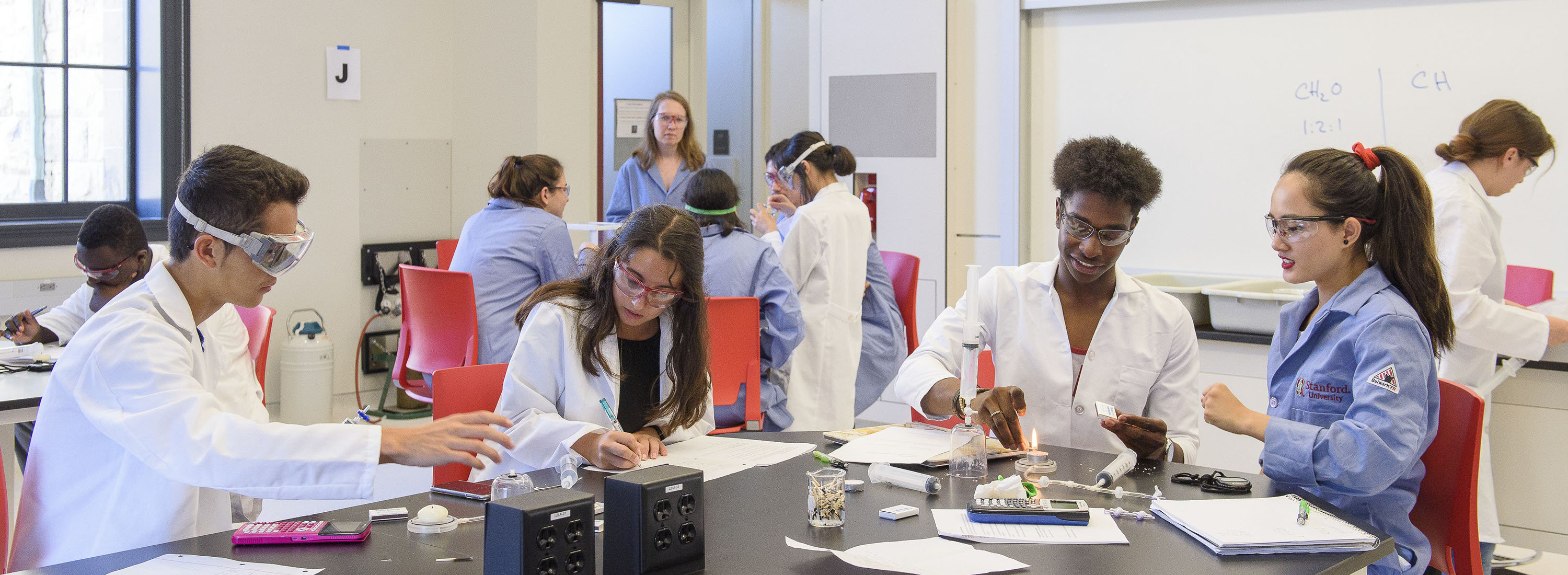Differentiated Instruction
Differentiated instruction involves teaching in a way that meets the different needs and interests of students using varied course content, activities, and assessments.
Teaching differently to different students
Differentiated Instruction (DI) is fundamentally the attempt to teach differently to different students, rather than maintain a one-size-fits-all approach to instruction. Other frameworks, such as Universal Design for Learning, enjoin instructors to give students broad choice and agency to meet their diverse needs and interests. DI distinctively emphasizes instructional methods to promote learning for students entering a course with different readiness for, interest in, and ways of engaging with course learning based on their prior learning experiences (Dosch and Zidon 2014).
Successful implementation of DI requires ongoing training, assessment, and monitoring (van Geel et al. 2019) and has been shown to be effective in meeting students’ different needs, readiness levels, and interests (Turner et al. 2017). Below, you can find six categories of DI instructional practices that span course design and live teaching.
While some of the strategies are best used together, not all of them are meant to be used at once, as the flexibility inherent to these approaches means that some of them are diverging when used in combination (e.g., constructing homogenous student groups necessitates giving different types of activities and assessments; constructing heterogeneous student groups may pair well with peer tutoring) (Pozas et al. 2020). The learning environment the instructor creates with students has also been shown to be an important part of successful DI implementation (Shareefa et al. 2019).
Differentiated Assessment
Differentiated assessment is an aspect of Differentiated Instruction that focuses on tailoring the ways in which students can demonstrate their progress to their varied strengths and ways of learning. Instead of testing recall of low-level information, instructors should focus on the use of knowledge and complex reasoning. Differentiation should inform not only the design of instructors’ assessments, but also how they interpret the results and use them to inform their DI practices.
Steps to consider
There are generally considered to be six categories of useful differentiated instruction and assessment practices (Pozas & Schneider 2019):
- Making assignments that have tasks and materials that are qualitatively and/or quantitatively varied (according to “challenge level, complexity, outcome, process, product, and/or resources”) (IP Module 2: Integrating Peer-to-Peer Learning)
It’s helpful to assess student readiness and interest by collecting data at the beginning of the course, as well as to conduct periodic check-ins throughout the course (Moallemi 2023 & Pham 2011) - Making student working groups that are intentionally chosen (that are either homogeneous or heterogeneous based on “performance, readiness, interests, etc.”) (IP Module 2: Integrating Peer-to-Peer Learning)
Examples of how to make different student groups provided by Stanford CTL (Google Doc) - Making tutoring systems within the working group where students teach each other (IP Module 2: Integrating Peer-to-Peer Learning)
For examples of how to support peer instruction, and the benefits of doing so, see for example Tullis & Goldstone 2020 and Peer Instruction for Active Learning (LSA Technology Services, University of Michigan) - Making non-verbal learning aids that are staggered to provide support to students in helping them get to the next step in the learning process (only the minimal amount of information that is needed to help them get there is provided, and this step is repeated each time it’s needed) (IP Module 4: Making Success Accessible)
Non-verbal cue cards support students’ self-regulation, as they can monitor and control their progress as they work (Pozas & Schneider 2019) - Making instructional practices that ensure all students meet at least the minimum standards and that more advanced students meet higher standards, which involves monitoring students’ learning process carefully (IP Module 4: Making Success Accessible; IP Module 5: Giving Inclusive Assessments)
This type of approach to student assessment can be related to specifications grading, where students determine the grade they want and complete the modules that correspond to that grade, offering additional motivation to and reduced stress for students and additional flexibility and time-saving practices to instructors (Hall 2018) - Making options that support student autonomy in being responsible for their learning process and choosing material to work on (e.g., students can choose tasks, project-based learning, portfolios, and/or station work, etc.) (IP Module 4: Making Success Accessible)
This option, as well as the others, fits within a general Universal Design Learning framework, which is designed to improve learning for everyone using scientific insights about human learning
References
Hall, M (2018). “What is Specifications Grading and Why Should You Consider Using It?” The Innovator Instructor blog, John Hopkins University Center for Teaching Excellence and Innovation.
Moallemi, R. (2023). “The Relationship between Differentiated Instruction and Learner Levels of Engagement at University.” Journal of Research in Integrated Teaching and Learning (ahead of print).
Pham, H. (2011). “Differentiated Instruction and the Need to Integrate Teaching and Practice.” Journal of College Teaching and Learning, 9(1), 13-20.
Pozas, M. & Schneider, C. (2019). "Shedding light into the convoluted terrain of differentiated instruction (DI): Proposal of a taxonomy of differentiated instruction in the heterogeneous classroom." Open Education Studies, 1, 73–90.
Pozas, M., Letzel, V. and Schneider, C. (2020). "Teachers and differentiated instruction: exploring differentiation practices to address student diversity." Journal of Research in Special Educational Needs, 20: 217-230.
Shareefa, M. et al. (2019). “Differentiated Instruction: Definition and Challenging Factors Perceived by Teachers.” Proceedings of the 3rd International Conference on Special Education (ICSE 2019).
Tullis, J.G. & Goldstone, R.L. (2020). “Why does peer instruction benefit student learning?”, Cognitive Research 5.
Turner, W.D., Solis, O.J., and Kincade, D.H. (2017). “Differentiating Instruction for Large Classes in Higher Education”, International Journal of Teaching and Learning in Higher Education, 29(3), 490-500.
van Geel, M., Keuning, T., Frèrejean, J., Dolmans, D., van Merriënboer, J., & Visscher A.J. (2019). “Capturing the complexity of differentiated instruction”, School Effectiveness and School Improvement, 30:1, 51-67, DOI: 10.1080/09243453.2018.1539013
